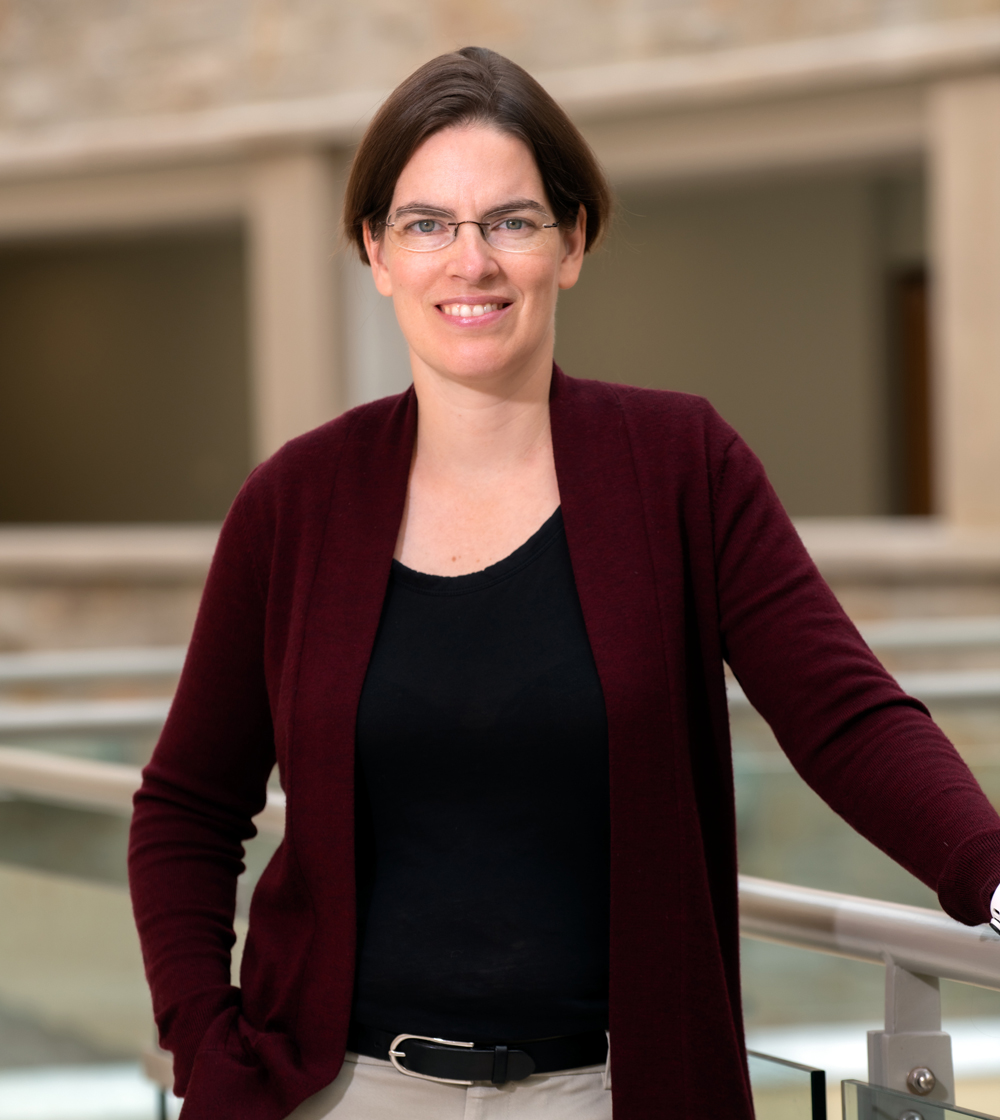A closer look at healing
Assistant Professor of Biology Vicki Losick admits she harbors a desire to change the world a little bit.
“I want to make ‘polyploidy’ a household word,” Losick said in her Higgins Hall office, next door to her lab, where she and her team are among the leading researchers investigating the curative aspects of a cellular phenomenon she says should be as familiar as the stem cell.
To start, polyploidy is a condition in which the cells of an organism have more than one pair of chromosomes. Humans, and most species, are diploid: They have two complete sets of chromosomes, one from each parent. Most plants are polyploid, with cells replicating again and again. Polyploidy is what fattens strawberries, for instance. Same with blueberries and bananas and most other fruits.
In humans, polyploidy’s uncontrolled cellular replication was at first viewed as a dangerous contributor to the growth of cancers. But Losick and others have found that the human body contains more polyploid cells than first understood. For instance, polyploid cells may make up as much as 80 percent of the adult human heart.

Vicki Losick (Lee Pellegrini)
Losick’s research has discovered that polyploid cells play a crucial role in wound healing, a role she thinks places polyploidy on the same level as stem cells, which have revolutionized the life sciences and many aspects of health care.
Losick would like to hear the word—a German derivation of the Greek words for “many” and “folds”—uttered by the president of the United States and spoken by evening news anchors.
“Everyone should know what a polyploidy is,” she said. “As a researcher, one of my goals is to educate the public. I think everyone should know the word and the role polyploidy plays in their lives.”
Among the scientists at the forefront of this relatively emergent field, Losick has published her findings in the journals Development, Trends in Genetics, and Advances in Wound Care, her lab’s findings helping to reveal mechanisms of “wound-induced polyploidization,” or WIP. Last May, she helped to organize the scientific conference “Polyploidy Across the Tree of Life.”
As a report last year in the journal Science noted, Losick and her peers have upended the previously held assumptions about polyploidy. “What is certain is that polyploid cells, far from being abnormal, are one of life’s major mechanisms for coping with the stresses of injury, disease, and a hostile environment,” the piece noted.
“As a researcher, one of my goals is to educate the public. I think everyone should know the word and the role polyploidy plays in their lives.”
Losick’s research has identified a protein that aids in the control of polyploidy in fruit flies. In mammals, its equivalent molecule is known as YAP1, shorthand for “yes1 associated transcription regulator,” the article explained. Scientists know that YAP1 plays a role in helping to regulate genes that control the size of human organs. In insects, YAP1 can provoke polyploidy in wound healing and then shut it down when unsuccessful.
Losick said she discovered what is now the central focus of her research almost by accident. As a postdoctoral researcher at the Carnegie Institution for Science in 2008, she focused her expertise as a microbiologist on stem cells.
But as she and others studied how wounds heal in fruit flies, she noticed unusual cells surrounding the wounds. They were not stem cells, but larger cells that turned out to be stuffed with multiple copies of their genome, yet which ceased to generate new cells.
“When we looked at the tissue, it was clear they were not dividing,” Losick said. “We saw these giant cells forming. Normally, cells divide into the same as what they were before. But these were not regenerating by cell division. The cells were growing in size to heal the wound.”
Using the fruit fly model, Losick has discovered that there are multiple routes to wound healing. Beyond the typical response of regeneration through cell division, she and her colleagues have found that cells can also be replaced by stimulating existing cells to grow in size by becoming polyploid, a process they have dubbed wound-induced polyploidization.
What remains unknown is why under conditions of stress, like injury, aging, and disease, polyploid cells frequently arise? And how do polyploid cells function during these stress responses?
“We are trying to understand what stress signals stimulate polyploid cells to arise, so one day we can promote them when they are doing something good for our tissues, or inhibit them when they are doing something bad like causing disease,” Losick said. “But we need to know how these cells affect the organ physiologically: Is it functioning well, or long-term do these cells lead to dysfunction?”
Losick, whose work is supported by the National Institutes of Health, said the facility of the fruit fly model allows her to incorporate undergraduates into her research.
“I have five undergraduates in the lab now. It is exciting to see them make discoveries and know that one day someone is going to be using that to heal an eye, or a kidney, or a liver. We don’t do that in the lab, but we can make fundamental discoveries that will go on to benefit humankind.”
Those students can go forth to help make polyploidy a household word.
“We want people to know what it is and why they should care about it. We want to make it the next ‘it’ word. That way, people can see why this is so important.”
